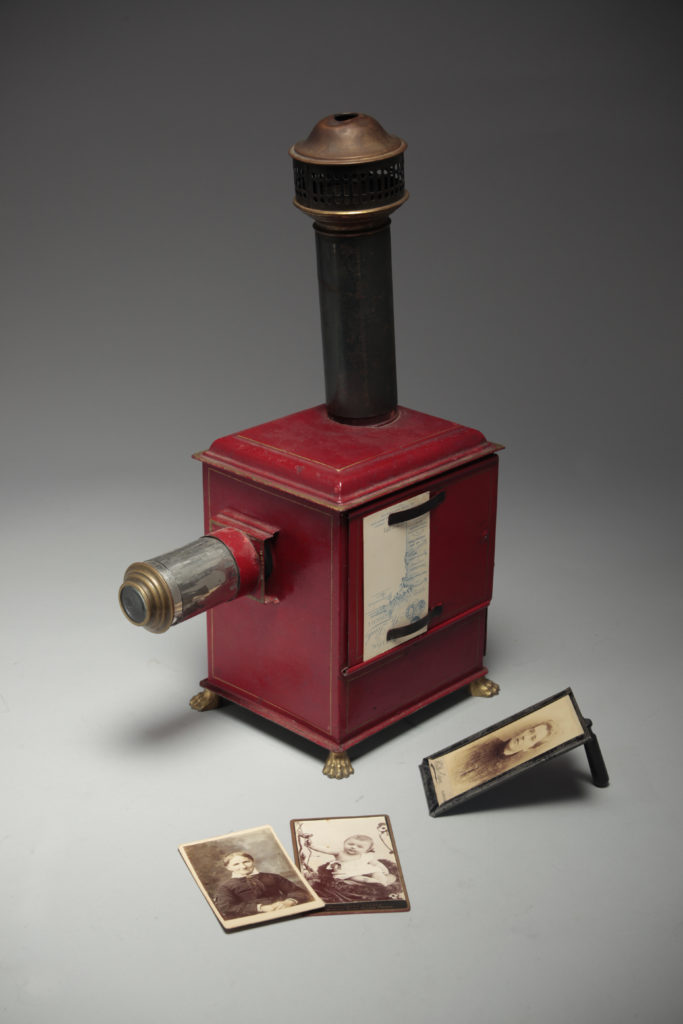The visitor’s card
Thanks to the development of the wet collodion process in the 1850s, it became possible to produce better proofs, and reduce exposure times. It was in this context that portrait photography enjoyed a serious boost in popularity. In 1854, French photographer Andre Adolphe Eugene Disderi submitted a patent for the carte de visite format portrait.
Disderi’s new process consisted in taking several exposures, measuring roughly 6x9cm, on a single plate with the help of a multiple lens body or a monocular body fitted with a multiplier back. The proofs were not all exposed at the same time, making it possible to change pose. Making the portraits into a smaller format enabled cost reductions, and from this moment on, photography became accessible to even more people.
This invention would lead to a considerable increase in photographic studios in Europe and the United States. Customers had various accessories and backgrounds at their disposal for the creation of their portraits while having their photographs taken. The developed proof was mounted on a card with the photographer’s name on the back, giving the latter a good bit of publicity.
The carte de visite portrait was a great success. People collected miniatures of their families, their friends, or even celebrities of the day. They made lavishly decorated albums in which to keep these portraits. During these years, formats diversified, notably including the office, bedroom or outdoor walk formats.


